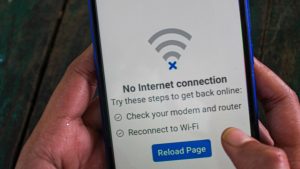Whether you’re switching phones, facing connectivity issues, or trying to improve your data speeds, configuring the correct AT&T APN settings is essential. APN (Access Point Name) settings act as the bridge between your mobile device and AT&T’s data network. In this article, we’ll check everything you need to know — from configuration basics and device-specific setup to advanced troubleshooting tips and optimization strategies.
What Is an APN and Why Is It Important?
An Access Point Name (APN) is the set of instructions your phone uses to connect to AT&T’s internet and multimedia messaging services. Without the correct APN:
- You may lose mobile data access.
- MMS (Multimedia Messaging Service) may not work properly.
- Data speed could drop significantly.
- Your device may struggle to connect to AT&T’s modern 5G network.
APN Evolution on AT&T’s Network
AT&T has rolled out various APNs over the years to accommodate network advancements. Here’s a quick evolution summary:
| APN Name | Purpose |
|---|---|
phone |
Legacy APN for basic connectivity |
NXTGENPHONE |
Common for most smartphones (LTE/4G/5G) |
ENHANCEDPHONE |
For 5G-enabled (non-standalone) devices |
NRPHONE |
For fully standalone 5G support |
Broadband |
Tablets and mobile hotspots |
Outdated APNs may cause performance or compatibility issues, so keeping them updated is crucial.
AT&T APN Settings by Device Type
Here are the latest recommended APN configurations for different devices:
For Most Smartphones (NXTGENPHONE)
| Setting | Value |
|---|---|
| Name | ATT NXTGENPHONE |
| APN | NXTGENPHONE |
| MMSC | http://mmsc.mobile.att.net |
| MMS Proxy | proxy.mobile.att.net |
| MMS Port | 80 |
| MCC | 310 |
| MNC | 410 |
| Authentication Type | None |
| APN Type | default,mms,supl,hipri |
| APN Protocol | IPv4/IPv6 |
| Bearer | Leave Blank |
For 5G Smartphones (ENHANCEDPHONE)
| Setting | Value |
|---|---|
| Name | ENHANCEDPHONE |
| APN | ENHANCEDPHONE |
| MMSC | http://mmsc.mobile.att.net |
| MMS Proxy | proxy.mobile.att.net |
| MMS Port | 80 |
| MCC | 310 |
| MNC | 410 |
| Authentication Type | None |
| APN Type | default,mms,supl,hipri |
| APN Protocol | IPv4 |
| Bearer | Unspecified |
For 5G Standalone Devices (NRPHONE)
| Setting | Value |
|---|---|
| Name | NRPHONE |
| APN | NRPHONE |
| MCC | 310 |
| MNC | 410 |
| Authentication Type | None |
| APN Type | default,mms,supl,hipri,fota |
| APN Protocol | Enabled |
| Bearer | Unspecified |
For Tablets
| Setting | Value |
|---|---|
| Name | ATT Broadband |
| APN | Broadband |
| MCC | 310 |
| MNC | 410 |
| Authentication Type | None |
| APN Type | default,mms,supl,hipri,fota |
| APN Protocol | Enabled |
For Mobile Hotspots (e.g., Netgear MR1100)
| Setting | Value |
|---|---|
| APN Name | ATT Mobile |
| APN | broadband |
| Authentication | None |
| PDP Type | IPv4v6 |
| PDP Roaming | IPv4 |
How to Configure APN Settings on Your Device
On Android
- Go to Settings > Network & Internet > Mobile Network > Access Point Names
- Tap the + (Add) icon or menu > New APN
- Fill in the fields using the correct configuration
- Save and select the new APN
- Restart your phone
On iPhone/iPad
- Go to Settings > Cellular > Cellular Data Network
- Manually enter APN values if needed
- Most configurations are auto-loaded from AT&T’s carrier profile
If the APN option is missing, try inserting a non-AT&T SIM, changing the settings, then switching back.
On Windows Devices
- Navigate to Settings > Network & Wireless > Cellular & SIM
- Locate the APN section under your SIM
- Input the necessary APN details
- Save and restart your device
Troubleshooting Common APN-Related Issues
No Data Connection (Even with Signal Bars)
- Double-check your APN against official settings
- Reset to default APN
- Toggle Airplane Mode
- Reboot your phone
Slow Internet Speeds
- Use dual protocol
IPv4/IPv6 - Test switching between
NXTGENPHONEandENHANCEDPHONE - Check for throttling or data caps from your plan
MMS Not Working
- Make sure MMSC is
http://mmsc.mobile.att.net - Confirm MMS proxy and port are correct
- Try sending MMS with WiFi turned off
Tips for Optimal Performance
- Use NXTGENPHONE as your default for smartphones
- Experiment with APN type: add
admin,internet,fotaif needed - Match your settings with your network capability (LTE vs 5G)
- Always document working settings before making changes
Real-World Experiences & Expert Advice
- Case Sensitivity Matters:
NXTGENPHONEvsnxtgenphonecould cause issues on some devices - Hotspot Devices: MR1100 users report improved speed with
broadbandAPN - In-Store Support: Retail reps often have device-specific tips that aren’t on official support pages
Best Practices for Avoiding APN Issues
| Tip | Why It Helps |
|---|---|
| Backup settings before updates | OS changes can reset APNs |
| Re-check APN after SIM changes | New SIMs may require reconfiguration |
| Don’t delete default APNs | They’re a good fallback |
| Keep alternative APNs noted | Helpful when switching devices/plans |
Conclusion
Correctly setting your AT&T APN configuration can make all the difference in your device’s mobile experience — from smooth browsing and fast data to flawless MMS messaging. Whether you’re using a 5G-capable smartphone, tablet, or mobile hotspot, following the right configuration and applying practical tips will help you avoid issues and unlock the best performance possible.






